Leonardo da Vinci Paintings are not just masterpieces but also windows into the mind of one of history’s greatest thinkers.
If you’re wondering which da Vinci’s paintings are a must-see, this article will guide you through his famous works.
Leonardo’s paintings, such as the Mona Lisa and The Last Supper, continue to fascinate art lovers worldwide. They are recognized for their innovative techniques and lifelike details.
His mastery of techniques such as sfumato and chiaroscuro set a new standard for artists of his time.
The Mona Lisa is perhaps the most renowned for her enigmatic expression.
The Last Supper, another pivotal work, captures the emotional intensity of the apostles at a critical moment.
Each painting offers a glimpse not only into his artistic skill but also his scientific curiosity.
The Vitruvian Man perfectly showcases his interest in human anatomy, blending art and science.
Discover how these creations have solidified Leonardo’s reputation as a master of the Renaissance, influencing countless artists across the centuries.
The Life of Leonardo da Vinci
Leonardo da Vinci was a true Renaissance man, possessing talents in art, science, and engineering. His remarkable journey from a small town in Italy to becoming an iconic historical figure is both fascinating and inspirational.
Early Years and Training
Leonardo was born in 1452 in the small village of Vinci, near Florence, Italy. He was the illegitimate son of a Florentine notary, Ser Piero, and a young peasant woman named Caterina.
Growing up in rural Tuscany, Leonardo was fascinated with nature and art.
At age 14, he began an apprenticeship under the renowned artist Andrea del Verrocchio in Florence.
Under Verrocchio, Leonardo learned many skills, including painting, sculpting, and mechanical arts.
His natural talent quickly emerged, and he contributed to various projects in Verrocchio’s workshop, refining his techniques and gaining valuable insights into the art of creation.
Leonardo’s early works demonstrated his unique ability to capture movement and emotion, laying the foundation for his famous paintings, including those attributed to Leonardo da Vinci.
Professional Life and Patrons
Leonardo worked for influential patrons throughout his professional life, which significantly impacted his career.
He moved to Milan around 1482 to work for Ludovico Sforza, the Duke of Milan, where he flourished as a painter and engineer.
During this time, he created iconic works, such as The Last Supper, which showcased his innovative use of perspective and detail.
Leonardo also worked as a military engineer, designing weapons and fortifications for the Duke.
After the fall of Sforza, Leonardo returned to Florence and painted the Mona Lisa, one of his most renowned masterpieces.
His time in Florence and later in Rome further established his reputation, and he attracted commissions from wealthy patrons across Italy.
Final Years and Legacy
Leonardo spent his final years in France, having been invited by King Francis I.
Living in the Château du Clos Lucé near Amboise, he continued his studies and artistic pursuits until he died in 1519.
Although he left few finished works, his contributions to art and science were profound.
His ability to blend art with scientific inquiry set him apart from his contemporaries.
Works like the Mona Lisa and The Last Supper remain celebrated and inspire artists and scholars worldwide.
His influence extends beyond his paintings, as his notebooks reveal inventive concepts far ahead of their time.
Leonardo’s legacy lives on, embodying the spirit of innovation and creativity.
Leonardo da Vinci Famous Paintings
Mona Lisa
The Mona Lisa, one of Leonardo da Vinci’s most famous paintings, depicts a seated woman believed to be Lisa Gherardini, the wife of Francesco del Giocondo, a wealthy merchant.
The painting is a half-length portrait, considered one of the world’s most famous and iconic paintings.
Leonardo da Vinci Mona Lisa painting is notable for its mastery of composition, use of light and shadow, and the psychological intensity of the figures.
The Mona Lisa’s fame is partly due to the painting’s enigmatic expression, often the subject of speculation and interpretation.
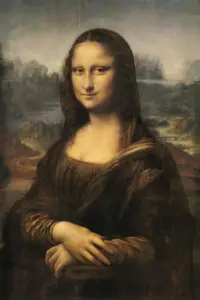
The Last Supper
The Last Supper, one of Leonardo da Vinci most famous paintings, depicts the scene from the Bible in which Jesus and his disciples are gathered for the Last Supper, the final meal Jesus shared with his disciples before his arrest and crucifixion.
Leonardo da Vinci’s Last Supper is a large mural commissioned by Ludovico Sforza, Duke of Milan, to be painted on the wall of the Dominican monastery Santa Maria delle Grazie in Milan, Italy.
The painting is regarded as one of the greatest masterpieces of the High Renaissance and one of the most renowned paintings in the world. It is notable for its mastery of composition, use of light and shadow, and psychological intensity of the figures.
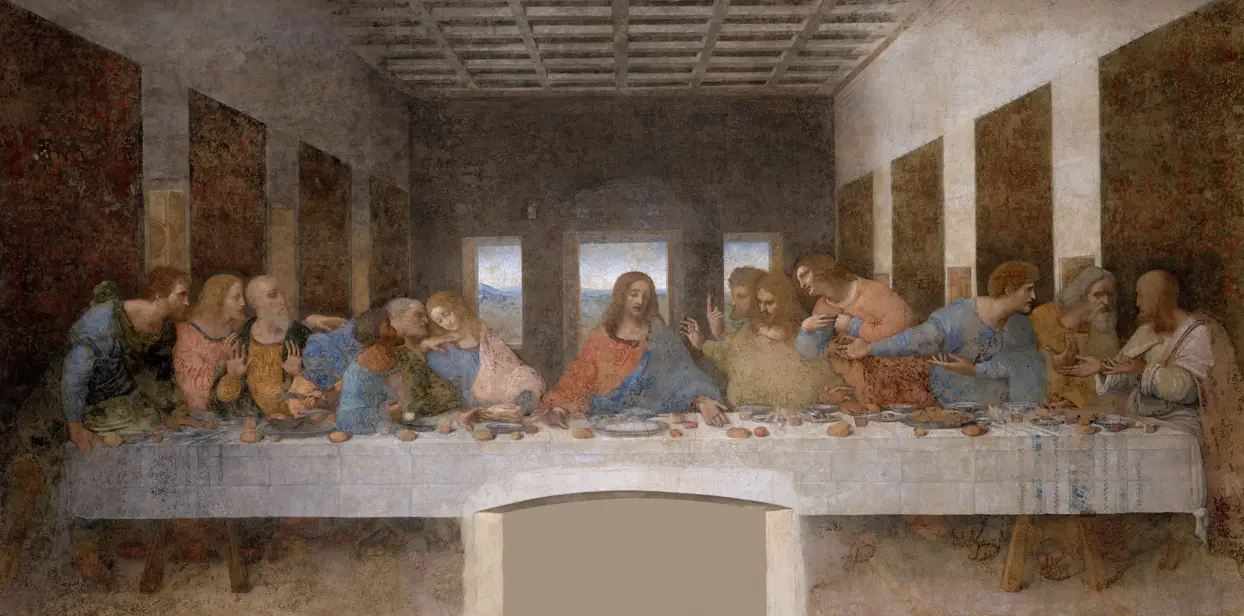
Salvator Mundi
The Salvator Mundi, also known as the “Savior of the World,” depicts Jesus Christ as the Salvator Mundi, holding an orb in his left hand and making the sign of the cross with his right hand.
Leonardo da Vinci’s Jesus painting is considered an important masterpiece of the High Renaissance. It is notable for its mastery of composition, use of light and shadow, and the psychological intensity of the Christ figure.
The painting sold for $450.3 million at Christie’s auction, sending a shockwave through the world.
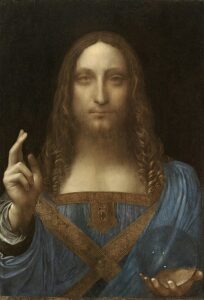
The Baptism of Christ
The Baptism of Christ, considered the first painting by Leonardo da Vinci, depicts a biblical scene in which Jesus is baptized by John the Baptist in the River Jordan.
The painting is considered one of Leonardo’s earliest known works. It is notable for its mastery of composition, use of light and shadow, and psychological intensity of the figures.
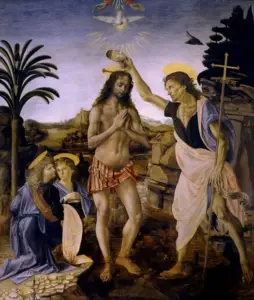
Lady with an Ermine
Lady with an Ermine is a portrait of Cecilia Gallerani holding an ermine, a small mammal that symbolized purity and nobility in the Renaissance era.
The painting is renowned for its realism, meticulous attention to detail, and the use of sfumato, a technique that blends colors to create a soft, hazy effect.
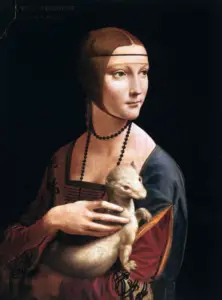
Leda and the Swan
Leda and the Swan depicts the story from Greek mythology of Leda, a queen of Sparta, who was seduced and impregnated by Zeus in the form of a swan.
The painting is considered a lost work, known only from copies, as no original has been found.

Madonna Litta
Madonna Litta is a painting by Leonardo da Vinci, created between 1490 and 1491. It depicts the Virgin Mary breastfeeding the baby Jesus, with a tiny angel playing with a curl of Mary’s hair.
The painting is a small devotional work considered one of the finest examples of Leonardo’s skill in painting the human figure.
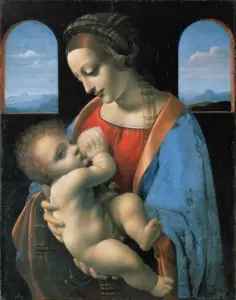
The Annunciation
The Annunciation depicts the biblical scene in which the angel Gabriel visits the Virgin Mary to inform her that she will conceive and give birth to Jesus Christ.
The painting is a small devotional, probably painted for a private patron. It is considered one of Leonardo’s earliest known works, notable for its mastery of composition, use of light and shadow, and the psychological intensity of the figures.
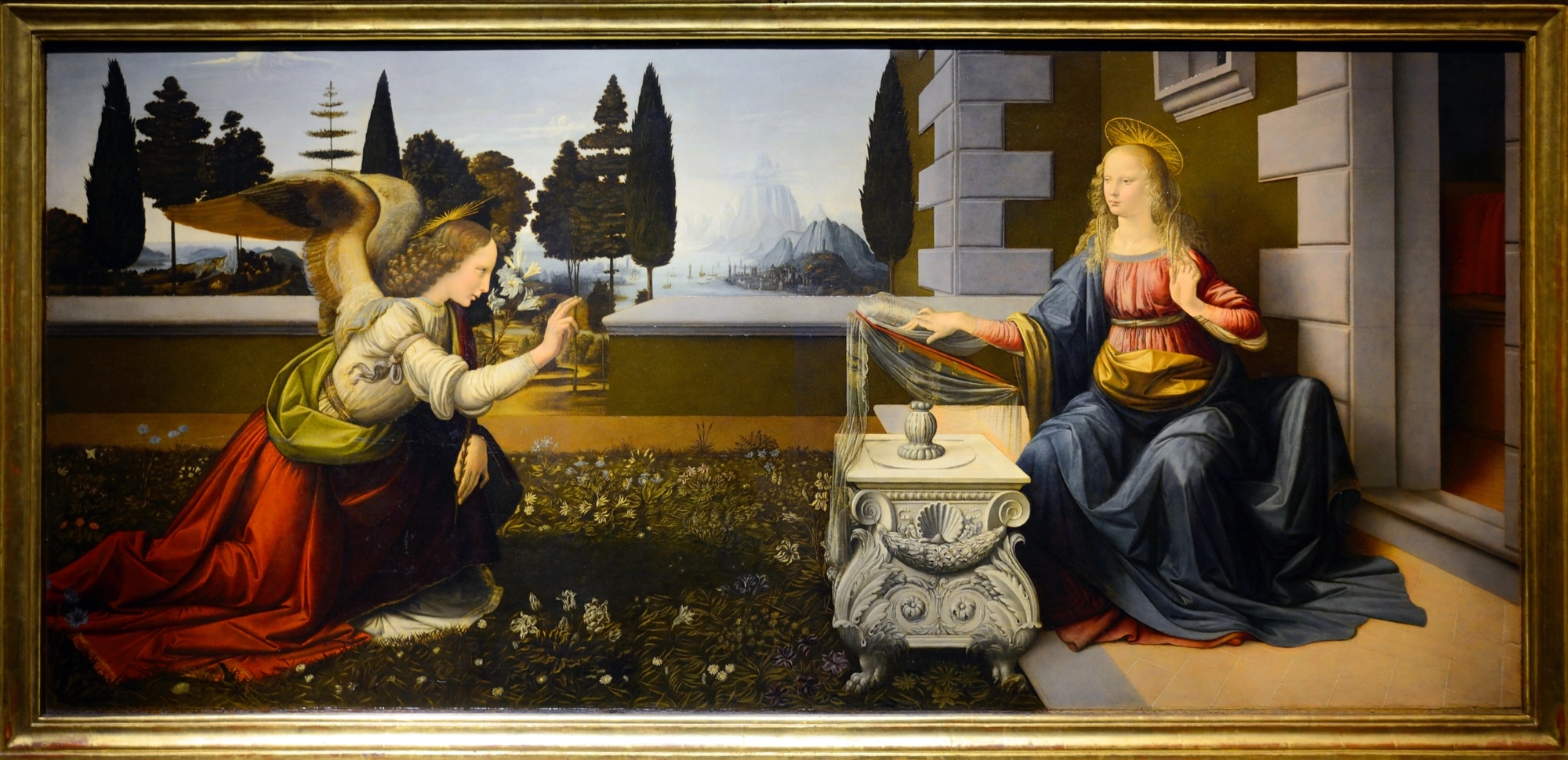
Portrait of a Musician
Portrait of a Musician depicts an unknown musician playing the lute against a landscape background.
The painting is notable for its effective use of light and shadow, which create a sense of depth and motion, as well as its meticulous attention to detail. It has been the subject of much speculation and has been widely studied by art historians and critics.
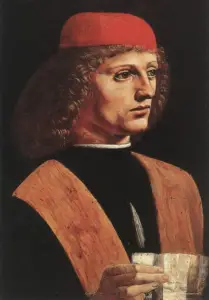
Ginevra de’ Benci
Ginevra de’ Benci depicts a young woman from a wealthy Florentine family who was married to Luigi Niccolini.
It’s notable for its use of sfumato, a technique that blends colors to create a soft, hazy effect, and the use of light and shadow, which gives the figures a sense of depth and volume.
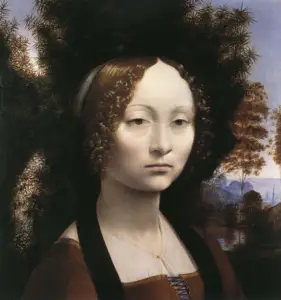
Saint John the Baptist
Saint John the Baptist, known as Leonardo da Vinci’s last painting, depicts the biblical figure John the Baptist as a young man in the wilderness, dressed in animal skins and holding a reed cross.
The painting is considered one of the greatest masterpieces of the High Renaissance. It is known for its mastery of composition, use of light and shadow, and psychological intensity of the figure of John the Baptist.
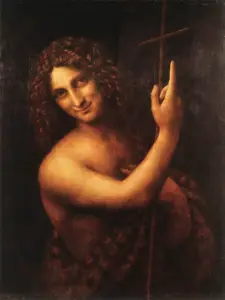
The Adoration of the Magi
The Adoration of the Magi depicts the biblical scene in which the three wise men, or Magi, come to pay homage to the baby Jesus, who the Virgin Mary is holding.
The painting is considered one of Leonardo’s earliest known works. It is notable for its mastery of composition, use of light and shadow, and psychological intensity of the figures.
The painting was never completed, left in a crude state, and is now lost. It is known through copies, some drawings, and sketches.

Techniques and Artistic Innovations
Leonardo da Vinci’s paintings are renowned for their groundbreaking techniques and artistic innovations. His mastery of light handling, anatomical precision, and inventive compositions revolutionized the art world.
Chiaroscuro and Sfumato
Leonardo da Vinci’s paintings, such as the Mona Lisa, showcase his expertise in chiaroscuro and sfumato.
Chiaroscuro contrasts light and dark to give paintings a sense of depth and volume.
The technique is evident in works like The Last Supper, where the play of shadows enhances the three-dimensional effect.
Sfumato, another signature technique, involves the delicate blending of colors and tones to produce soft, seamless transitions.
This creates a hazy effect, most famously seen in the Mona Lisa’s enigmatic smile. Unlike sharp lines, sfumato creates the illusion of movement and life, distinguishing da Vinci’s work from that of his contemporaries.
Anatomical Studies and Proportions
Leonardo’s fascination with anatomy had a profound influence on his paintings.
He conducted detailed studies of the human body, which he intricately incorporated into his art.
These anatomical observations helped him achieve realistic proportions and lifelike representations.
A famous Leonardo da Vinci painting, the Vitruvian Man, exemplifies his dedication to proportions and symmetry.
His keen observation of muscle, bone structure, and bodily dimensions informs works like Saint John the Baptist, where realistic anatomy is paired with his artistic vision.
By integrating these studies into his art, Leonardo ensured that each figure was scientifically accurate and artistically compelling.
Engineering and Inventions in Art
Leonardo’s inventive mind extended beyond traditional art techniques.
He often combined engineering and art, turning his paintings into visual marvels.
His knowledge of mechanics and structures influenced both his designs and artistic execution.
Leonardo employed linear perspective and geometry to construct intricate compositions in works such as The Last Supper.
This made his scenes more dynamic and spatially complex. His unique approach allowed him to depict mechanical and architectural innovations in art, leaving a lasting impact on the field.
5 Leonardo da Vinci Unfinished Paintings
Several paintings by Leonardo da Vinci are considered unfinished. These include:
- The Adoration of the Magi was commissioned by the Monks of San Donato a Scopeto in Florence, Italy, in 1481. Although the painting was never completed, it is now housed in the Uffizi Gallery in Florence.
- The St. Jerome, a painting depicting Saint Jerome in the Wilderness, is housed in the Vatican Museums in Rome, Italy.
- The Battle of Anghiari is a painting commissioned by the Signoria of Florence, Italy, in 1503. The painting was never completed, and the surviving fragment is housed in the Palazzo Vecchio in Florence.
- The Virgin and Child with St. Anne is a painting depicting the Virgin Mary, Jesus, and St. Anne housed in the Louvre Museum in Paris, France.
- The Leda and the Swan, a painting depicting the mythological story of Leda and the Swan, which is housed in the Galleria Borghese in Rome, Italy
These Leonardo paintings are considered unfinished because Leonardo did not complete them. His students and followers have finished some of them; however, they may not have the same mastery and accuracy as the original artist’s works.
Frequently Asked Questions
Leonardo da Vinci is known for creating some of the most iconic paintings in art history. Thanks to their beauty and mystery, his works continue to intrigue art lovers around the world.
What are the three famous paintings of Leonardo da Vinci?
Leonardo da Vinci’s three most famous paintings are the Mona Lisa, The Last Supper, and the Vitruvian Man. These works showcase his mastery of art and an extraordinary understanding of human anatomy and perspective.
What is the #1 most famous painting in the world?
The “Mona Lisa” is regarded as one of the most famous paintings in the world. This celebrated work of art is renowned for its enigmatic smile and mysterious background.
How many Leonardo da Vinci paintings are left?
About 15 to 20 paintings are widely attributed to Leonardo da Vinci. These paintings are distributed across various museums and collections worldwide.
Why is Mona Lisa’s painting so famous?
The “Mona Lisa” is famous for its captivating depiction of the subject’s expression, which appears to change depending on the angle from which it is viewed. Leonardo employed innovative techniques, such as sfumato, which added to the painting’s allure and mystery.
Where is the Mona Lisa buried?
The actual burial place of the woman depicted in the Mona Lisa, believed to be Lisa Gherardini, is said to be at the convent of Saint Orsola in Italy.
How much is the Mona Lisa worth?
The Mona Lisa has an estimated value that reaches into the billions, although it is considered priceless and not for sale. This high valuation reflects its profound cultural and historical significance.
Where is the Mona Lisa kept?
The Mona Lisa is kept in the Louvre Museum in Paris, France. It is displayed in a climate-controlled glass case to ensure its preservation.
What are Leonardo’s two most famous surviving paintings?
Leonardo’s two most famous surviving paintings are the Mona Lisa and The Last Supper. Both works are celebrated for their artistic innovation and impact on the art world.
How long did it take to paint the Mona Lisa?
Leonardo da Vinci worked on the Mona Lisa between 1503 and 1506, though some believe he continued to make adjustments until 1517. This long duration highlights his dedication to perfecting the piece.
What is Leonardo’s greatest masterpiece?
Although opinions may vary, many consider the Mona Lisa Leonardo da Vinci’s greatest masterpiece. Its influence and fame have endured over the centuries.
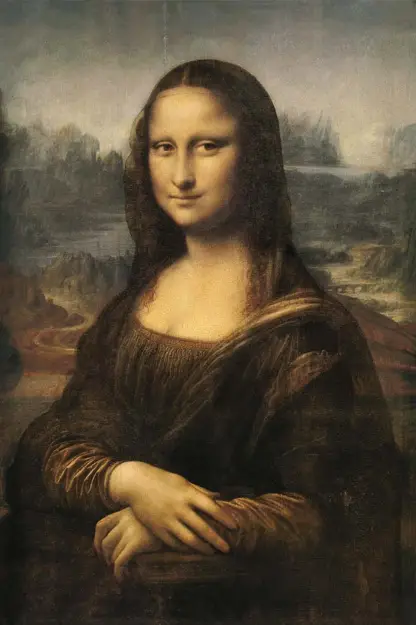
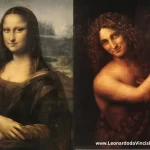
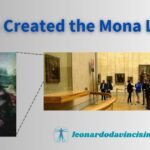
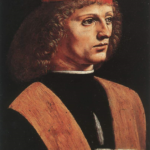
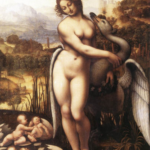
 Leonardo Bianchi,
the creator of Leonardo da Vinci's Inventions.
Thank you for visiting
Leonardo Bianchi,
the creator of Leonardo da Vinci's Inventions.
Thank you for visiting